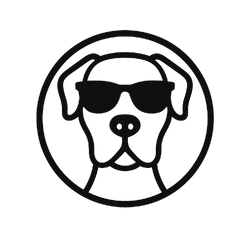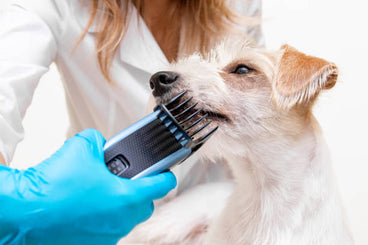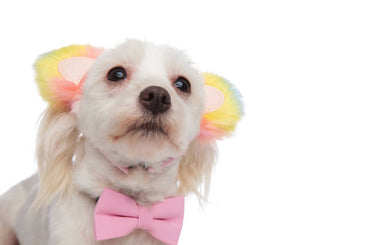Brushing your dog’s teeth isn’t just a bonus—it's essential for their health. Poor dental care can lead to bad breath, gum disease, and even serious organ problems. But how often should you actually brush your dog’s teeth at home? In this blog, we’ll break it down and show you the best ways to make dental care a normal (and stress-free) part of your routine.
How often is ideal for brushing?
Veterinarians recommend brushing your dog’s teeth at least 2 to 3 times per week, but daily brushing is best. Just like humans, dogs benefit most from regular cleaning. Plaque starts building up within hours after eating, and without brushing, it hardens into tartar.
- Best: Daily brushing
- Minimum: 2–3 times a week
- Start slow: Even once a week is better than none
Shop Dog Toothbrush & Toothpaste Kits
Why is regular brushing so important?
Regular brushing helps prevent periodontal disease, which affects over 80% of dogs by age 3. Dental infections can spread to the heart, liver, and kidneys. Plus, brushing keeps breath fresh and helps your dog live a longer, healthier life.
- Removes food particles and bacteria
- Prevents plaque turning into tartar
- Reduces risk of costly dental procedures
What’s the best time to brush your dog’s teeth?
Pick a time when your dog is relaxed—after a walk, in the evening, or during quiet time. Make it part of a routine. Dogs thrive on habits, and brushing will be easier if they know what to expect.
- Use calm tones and positive reinforcement
- Reward with a treat or play afterward
- Be patient—consistency builds cooperation
Shop Easy-to-Use Dog Toothbrushes
What tools do I need to brush my dog’s teeth?
You don’t need much—just a dog-safe toothbrush and pet-friendly toothpaste. Never use human toothpaste, as it can be toxic for dogs. Finger brushes or soft-bristle brushes work best depending on your dog’s size and comfort level.
- Soft-bristle or finger toothbrush
- Dog-formulated toothpaste (flavors like chicken or peanut butter)
- Optional: Dental wipes, sprays, or water additives for extra care
Shop Dog Tooth Cleaning Supplies
How can I make brushing easier for my dog?
Many dogs aren’t used to having their mouth touched, so it helps to go slow. Let your dog sniff the toothbrush and taste the toothpaste. Start with short sessions and lots of praise. Over time, your dog will learn to tolerate (and maybe even enjoy!) the process.
- Start with your finger before using a brush
- Use flavored toothpaste your dog enjoys
- Keep sessions short and end on a positive note
Shop Starter Kits for First-Time Brushers
What if my dog refuses to let me brush?
If your dog completely resists brushing, don’t give up! There are still other ways to support their dental health. Use dental chews, water additives, or toys designed to clean teeth while your dog plays. These won’t replace brushing—but they’re better than nothing.
- Dental chews and bones help scrape plaque
- Dental toys massage gums and clean while chewing
- Water additives freshen breath and fight bacteria
Do different breeds need different dental care?
Yes, some dog breeds are more prone to dental issues than others. Small breeds like Chihuahuas, Pomeranians, and Yorkies often have crowded teeth that trap food. They may need more frequent brushing and earlier dental checkups.
- Small breeds: Often need daily brushing
- Flat-faced breeds: More prone to dental disease (e.g. Bulldogs, Pugs)
- Large breeds: Still need care, but may tolerate brushing better
Shop Tools for Small Breed Dental Care









